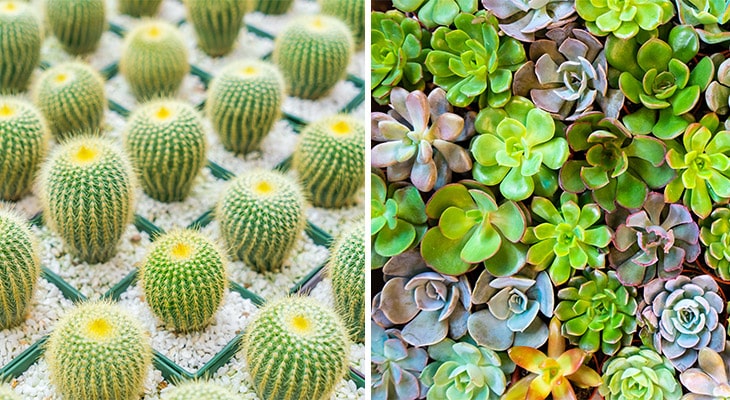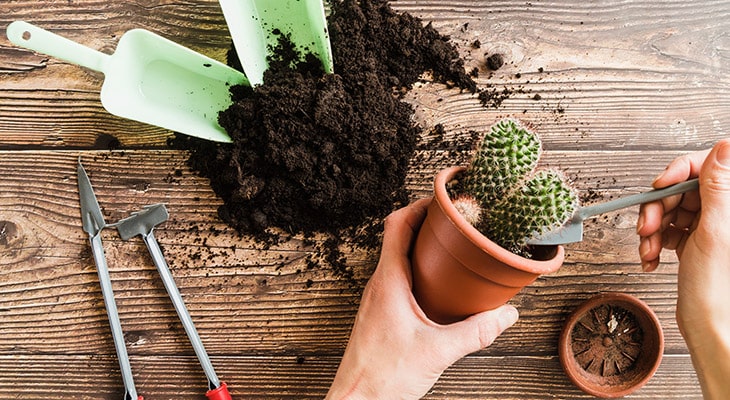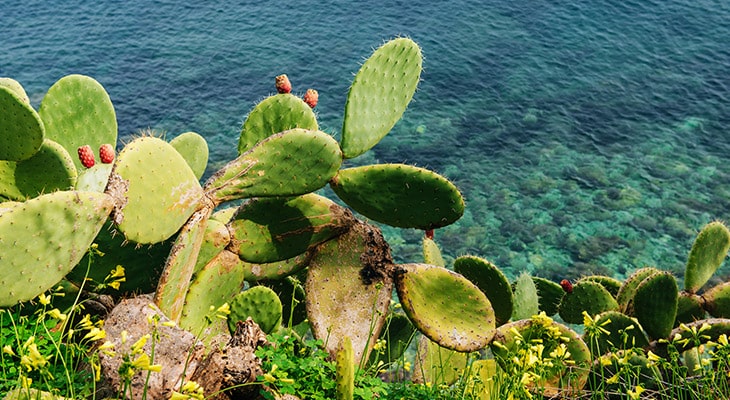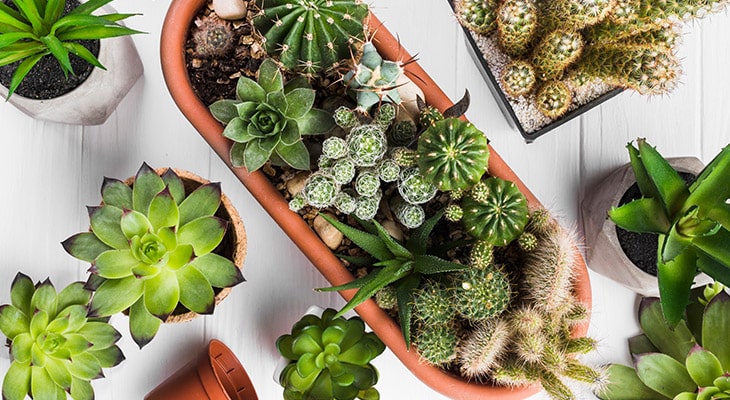Can Cacti And Succulents Be Planted Together?
Disclosure: This page contains affiliate links. This means that the owner of this website might be compensated for any qualifying purchases made via these links.
Although cacti grow in all environments – deserts, temperate regions, and even rainforests – it is apparent that these plants are incredibly fond of heat and sunlight. Even those that grow in rainforests can only be found growing on top of trees where they are exposed to more sun.
A bigger part of the cacti family prefers desert conditions.
Succulents are plants with fleshy and juicy stems but are remarkably different from cacti. Succulents include Aloe vera and bromeliads like pineapples.
One of the questions many gardening enthusiasts ask is, can cacti and succulents be planted together?
The answer is yes, you can grow succulents together with cacti in most cases. Yet, you need to know the varieties well and make sure that none of them have special needs.
Here is why:
– Both succulents and cacti thrive in similar types of soils – grainy and sandy soils with small crushed rock added in them.
– Both succulents and cacti have similar water, heat, and sunlight needs – less water, a significant amount of heat, and a lot of light.
– Both have fleshy stems that make them look nice together in your garden.
Contents
Are Cacti Succulents?

Although cacti possess some of the features that are synonymous with succulents – collecting a lot of water in stems and roots; leaves with thorny outgrowths and waxy coating to minimize loss of water; and growing in hot and dry conditions – cacti and succulents are scientifically distinct from each other.
Here are the salient differences between cacti and succulents:
– Succulents lack areoles (bumps on leaves where spikes and thorns emerge) which are a defining characteristic of cacti.
– Some succulents come with branches. Cacti are completely devoid of branches.
– Succulents tend to be short in stature while cacti can grow as tall as 3 meters in some areas.
– Succulents sometimes come with true leaves. Cacti, on another hand, are completely devoid of leaves regardless of the specie.
– Succulents seldom produce flowers while cacti always produce big, bold, and colorful flowers.
What Is The Best Soil For Cacti And Succulents?

There are many well-known brands that sell ready-made potting mixes for cacti and succulents. I usually like to prepare my own since I know exactly what ingredients I use.
If you don’t have the time or patience to prepare your own recipe, I recommend you use this potting mix. I’ve used it before and it’s very good.
As I mentioned above, when I have enough free time, I like to make my own mix using several ingredients.
To make such soil, you first need to be aware of the needs of your succulents and cacti.
The perfect soil for cacti and succulents should have these characteristics:
– The soil should not be moist most of the time. Too much moisture causes the roots of succulents and cacti to rot.
– The soil should drain easily, just like desert sand. This is why garden soil should not be used to grow cacti and succulents. But it is a reason why the clay pot (in which you’ll plant your succulents and cacti) should come with holes under and around it.
– The soil should contain minimal organic matter that can prevent it from drying too easily.
Basically, your cacti and succulents require well-draining, airy, less moist, and grainy soil that has just the right organic matter content that won’t let it dry easily.
Do you wish to create DYI succulent and cacti soil?
Here are the ingredients I regularly use:
- Five parts perlite – Order from Amazon
- One part builder sand (any other coarse sand would do) – Order from Amazon
- A pinch of fine Azomite rock dust, mined from mineral-rich volcanic ash – Order from Amazon
- Four parts of potting soil (any potting soil you can find in the store) – Order from Amazon
Perlite is used to prevent soil compaction, which is very important for the healthy growth of any plant. This will keep the soil fluffy and aerated.
The builder’s sand improves water drainage and loosens the heavy or compacted soil.
The Azomite rock dust is an organic source of a large spectrum of roughly 70 trace mineral elements and micro-mineral which are vital in plant development and contains many rare elements that are not present in other organic and artificial fertilizers.
This rock dust supplies the vital elements necessary to sustain plant functions (unlike other conventional fertilizers that concentrate only on replenishing the depleted minerals in the soil).
Once you have mixed the above ingredients and placed them in the pot or whichever growing surface of your choice, proceed to dress the top with fine pea gravel (order from Amazon) or small aquarium stones.
This is meant to prevent the crowns of your cacti from rotting when they grow up and it also gives your potted plants a very nice look.
You can boost the acidity of your preparation by adding one tablespoonful of white vinegar to every 5 gallons of irrigating water.
There are many different recipes for obtaining the best cacti and succulent soil and you can usually customize this mix based on your cacti and succulent species.
Succulents And Cacti Water Requirements

Succulents and cacti aren’t some of the thirstiest plants out there.
With all factors considered – the varying weather conditions, constituents of the soil, etc – the rule of thumb is to water your succulents and cacti once every week.
When it is time to water them, it is prudent to pour water until the soil is saturated. When you see water dripping from the holes at the bottom of the pot, you know the soil is adequately soaked.
Conclusion
Cacti and succulents can be planted together most of the time without any problems since they have very similar requirements and needs.
Still, when you decide to plant cacti and succulents in the same pot, double-check the varieties and make sure that none of them need special conditions.
If the succulents or cacti variety requires a particular soil type or more frequent watering, the other plant in the same pot might suffer.
For instance, a cactus that grows in semi-desert might have different water and soil requirements than one that grows on a hard rock substrate. When the plant shares the pot with another family of succulents and they have different requirements, it will be impossible to make both plants happy.


